

| Region rejsu : Azja |
| Firma : Celebrity Cruises |
| Statek : Celebrity Millennium |
| Data rozpoczęcia : czw. 11 wrz 2025 |
| Data zakończenia : wt. 23 wrz 2025 |
| Liczba nocy : 12 nocy |
| Dzień | Data | Port | Wypłynięcie | Odpłynięcie |
|---|---|---|---|---|
| 1 | 11.09 czw. | Yokohama (Tokio) / Japonia | 17:00 | |
| 2 | 12.09 pt. | Simidzu / Japonia | 07:00 | 16:00 |
| 3 | 13.09 sob. | Kioto / Japonia | 11:00 | |
| 4 | 14.09 niedz. | Kioto / Japonia | 18:00 | |
| 5 | 15.09 pon. | Kochi / Indie | 08:00 | 17:00 |
| 6 | 16.09 wt. | Hiroszima / Japonia | 09:00 | 18:00 |
| 7 | 17.09 śr. | Dzień na morzu / Morze | ||
| 8 | 18.09 czw. | Kagoshima / Japonia | 08:00 | 17:00 |
| 9 | 19.09 pt. | Nagasaki / Japonia | 08:00 | 17:00 |
| 10 | 20.09 sob. | Fukuoka / Japonia | 08:00 | 17:00 |
| 11 | 21.09 niedz. | Busan / Korea | 07:00 | 18:00 |
| 12 | 22.09 pon. | Dzień na morzu / Morze | ||
| 13 | 23.09 wt. | Seul / Korea | 05:00 |
Zakwaterowanie w kabinie wybranej kategorii;
Posiłki w ramach all inclusive (z wyjątkiem alternatywnych restauracji);
Napoje: woda, herbata, kawa w punktach samoobsługowych na statku;
Wszystkie publiczne rozrywki na pokładzie (wieczorne pokazy, kluby nocne, muzyka na żywo itp.);
Udział dzieci w klubach dziecięcych;
Korzystanie z basenów i jacuzzi;
Siłownia, boisko sportowe, zajęcia grupowe;
Obsługa kabin;
Opłaty portowe, podatki i opłaty;
W przypadku kategorii kabin (apartamentów) typu Retreat – Ultra all inclusive:
Wszystkie powyższe usługi są wliczone w cenę;
Szlafroki do użytku na pokładzie;
Pakiet napojów premium;
Premium Wi-Fi.
Dodatkowo płatne:
przelot;
transfery;
wizy na trasie;
hotel przed i po rejsie (w razie potrzeby);
napiwki dla personelu*;
alternatywne restauracje;
napoje alkoholowe i niektóre napoje bezalkoholowe;
Internet i telefon na pokładzie;
kasyno na pokładzie;
usługi pralnicze/czyszczenie chemiczne;
salon kosmetyczny, centrum SPA;
wycieczki po portach (opcjonalnie).
*Wysokość napiwku zależy od wybranej kategorii kabiny:
(kabina wewnętrzna, z oknem, z balkonem, Infinity Veranda) kosztuje 18,00 USD za osobę dziennie,
w przypadku kabin Concierge i AquaClass – 18,50 USD za osobę dziennie,
a w przypadku apartamentów – 23,00 USD za osobę dziennie.
Koszt napiwku jest automatycznie doliczany do faktury końcowej. Jeśli zapłacisz napiwek z góry podczas rezerwacji rejsu, nie zostanie on uwzględniony na rachunku końcowym.
PAKIETY NAPOJOWE CELEBRITY CRUISES
Dostępne są zarówno alkoholowe, jak i bezalkoholowe pakiety rejsowe, które zaspokoją każdy gust.
Nowy pakiet All Inclusive zawiera Klasyczny Pakiet Napojów, który pozwala cieszyć się nielimitowaną ilością wody, piwa, koktajli, mrożonych napojów i win lane do 10 dolarów za porcję. Klasyczny Pakiet Napojów obejmuje również 15% zniżki na wszystkie butelki wina.
Pakiety Napojów Premium obejmują wszystkie opcje dostępne w Klasycznych Pakietach Napojów, a także kawę premium, świeże soki, soki butelkowane i puszkowane, San Pellegrino, Red Bull, wodę witaminową, mrożoną herbatę Fair Trade, piwo rzemieślnicze i rzemieślnicze, likiery premium, Coca-Colę, wodę butelkowaną premium, wina lane do 17 dolarów oraz 20% zniżki na wino butelkowane.
Pakiet Klasyczny
W ramach Pakietu Klasycznego możesz wybierać spośród niesamowitej oferty piw, alkoholi, koktajli, likierów, mrożonych napojów i win lane w cenie do 10 USD za porcję. Otrzymasz również 15% zniżki na wszystkie wina butelkowane. Cena Pakietu Klasycznego zaczyna się od 89 USD za dzień.
Pakiet Premium
Już od 109 USD za dzień, Pakiet Premium obejmuje autorskie kawy i herbaty, piwa rzemieślnicze i rzemieślnicze, alkohole, koktajle, mrożone napoje, produkty Coca-Coli, wodę butelkowaną premium oraz wina na kieliszki do 17 USD za porcję. Otrzymasz również 20% zniżki na wszystkie wina butelkowane.
*Należy wybrać pakiet All Inclusive, który obejmuje Klasyczny Pakiet Napojów, Podstawowy Pakiet Internetowy oraz napiwki i obowiązuje w kabinach AquaClass®, z wyjątkiem Galapagos. Wszyscy goście w kabinie muszą wybrać ten sam pakiet cenowy.
Pakiet Napojów Zero Proof
Pakiet Napojów Zero Proof kosztuje 30 USD za dzień. Pakiet ten obejmuje wszystkie niezbędne rzeczy, takie jak świeżo wyciskane soki, kawę i herbatę premium oraz wodę butelkowaną.
W zależności od terminu rejsu, aby potwierdzić kabinę, należy dokonać płatności zgodnie z harmonogramem.
Po dokonaniu przedpłaty, kierownik potwierdza zgłoszenie w systemie rejsowym.
Zaliczka (przedpłata)
Czas trwania rejsu 1-5 nocy - 100 USD/osoba
6 lub więcej nocy - 450 USD/osoba
Płatność całości najpóźniej na 60 dni przed rozpoczęciem rejsu
Płatność całości (rejsy w okresie 24-31 grudnia) najpóźniej na 90 dni przed rozpoczęciem rejsu
Standardowe kary dla rejsów Celebrity
Okres anulowania
Zasady anulowania
90-61 dni przed przyjazdem
1-5 nocy 35 USD/osoba
6 nocy lub więcej 70 USD/osoba
60–46 dni przed przyjazdem w wysokości zaliczki
45–31 dni przed przyjazdem 25% całkowitego kosztu rejsu, nie mniej niż zaliczka
30–15 dni przed przyjazdem 50% całkowitego kosztu rejsu, nie mniej niż zaliczka
14 dni przed przyjazdem/nieobecność na pokładzie 100% kosztu rejsu
Kary za rejsy noworoczne Celebrity (24–31 grudnia)
Okres, w którym nastąpiło anulowanie Warunki anulowania
90-61 dni przed przyjazdem W wysokości zaliczki
60-46 dni przed przyjazdem 25% całkowitego kosztu rejsu, nie mniej niż kwota zaliczki
50% całkowitego kosztu rejsu, nie mniej niż kwota zaliczki
45-31 dni przed przyjazdem 50% całkowitego kosztu rejsu, nie mniej niż kwota zaliczki
30-15 dni przed przyjazdem 75% całkowitego kosztu rejsu, ale nie mniej niż kwota zaliczki
14 dni przed przyjazdem/nieobecność na pokładzie 100% kosztu rejsu
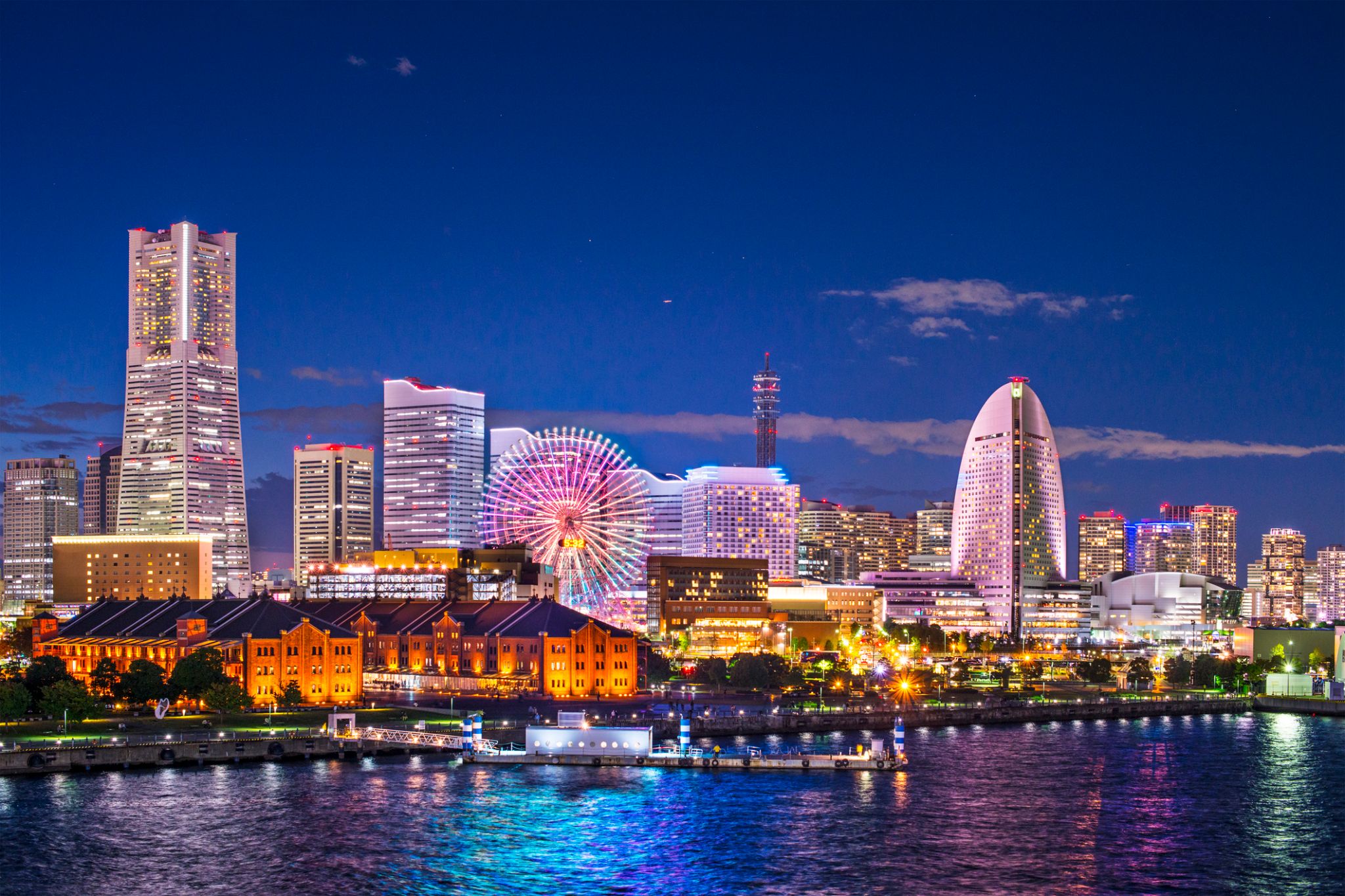
Tokyo, officially Tokyo Metropolis, one of the 47 prefectures of Japan, has served as the Japanese capital since 1869. As of 2014, the Greater Tokyo Arearanked as the most populous metropolitan area in the world. The urban area houses the seat of the Emperor of Japan, of the Japanese government and of the National Diet. Tokyo forms part of the Kantō region on the southeastern side of Japan's main island, Honshu, and includes the Izu Islands and Ogasawara Islands. Tokyo was formerly named Edo when Shōgun Tokugawa Ieyasu made the city his headquarters in 1603. It became the capital after Emperor Meiji moved his seat to the city from Kyoto in 1868; at that time Edo was renamed Tokyo. Tokyo Metropolis formed in 1943 from the merger of the former Tokyo Prefecture and the city of Tokyo. Tokyo is often referred to as a city but is officially known and governed as a "metropolitan prefecture", which differs from and combines elements of a city and a prefecture, a characteristic unique to Tokyo.
The 23 Special Wards of Tokyo were formerly Tokyo City. On July 1, 1943, it merged with Tokyo Prefecture and became Tokyo Metropolis with an additional 26 municipalities in the western part of the prefecture, and the Izu islandsand Ogasawara islands south of Tokyo. The population of the special wards is over 9 million people, with the total population of Tokyo Metropolis exceeding 13.8 million. The prefecture is part of the world's most populous metropolitan area called the Greater Tokyo Area with over 38 million people and the world's largest urban agglomeration economy. As of 2011, Tokyo hosted 51 of the Fortune Global 500 companies, the highest number of any city in the world at that time. Tokyo ranked third (twice) in the International Financial Centres Development Index. The city is home to various television networks such as Fuji TV, Tokyo MX, TV Tokyo, TV Asahi, Nippon Television, NHK and the Tokyo Broadcasting System.
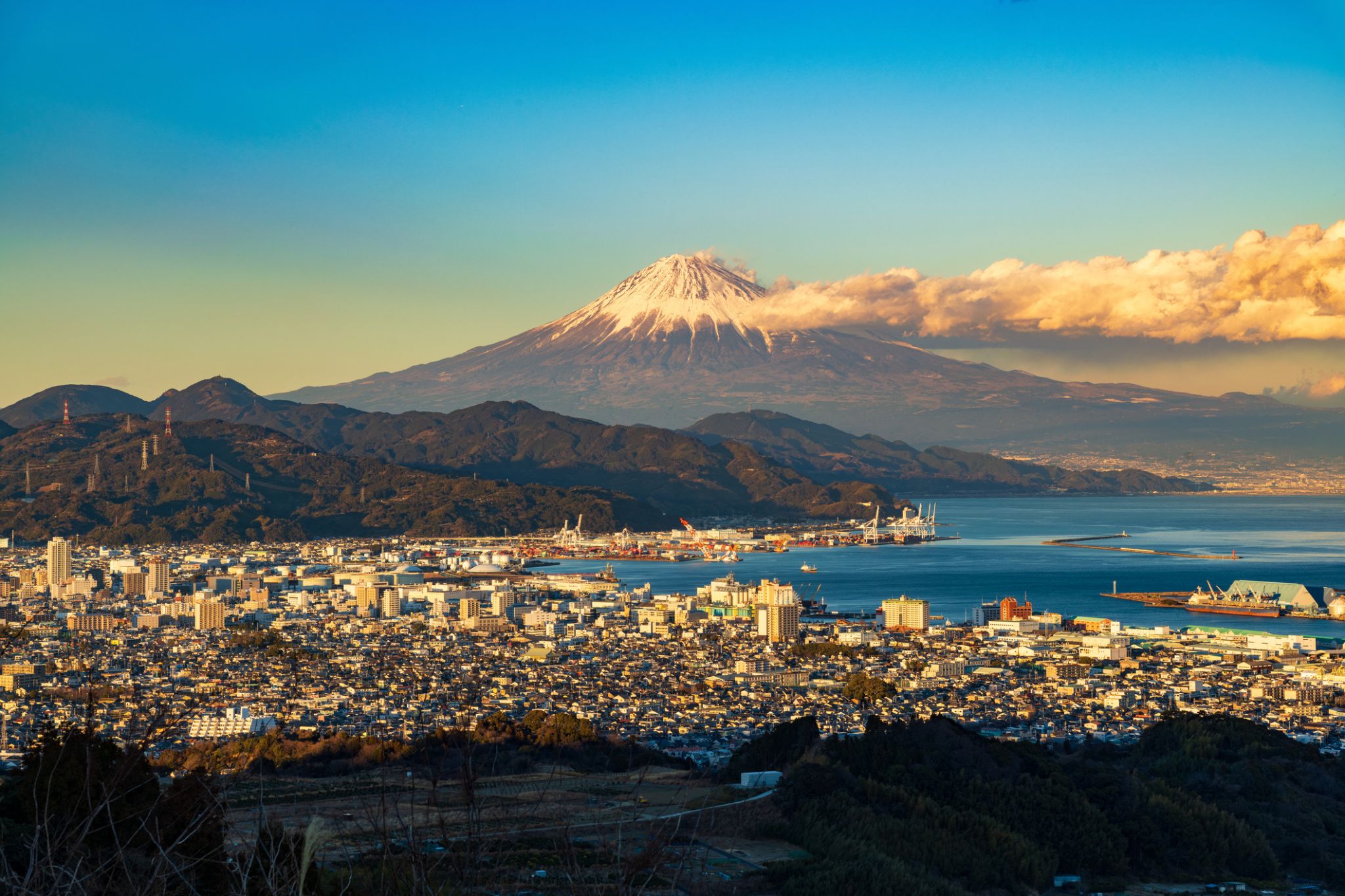

Kyoto, officially Kyoto City, is the capital city of Kyoto Prefecture, located in the Kansai region of Japan. It is best known in Japanese history for being the former Imperial capital of Japan for more than one thousand years, as well as a major part of the Kyoto-Osaka-Kobe metropolitan area.

Kyoto, officially Kyoto City, is the capital city of Kyoto Prefecture, located in the Kansai region of Japan. It is best known in Japanese history for being the former Imperial capital of Japan for more than one thousand years, as well as a major part of the Kyoto-Osaka-Kobe metropolitan area.
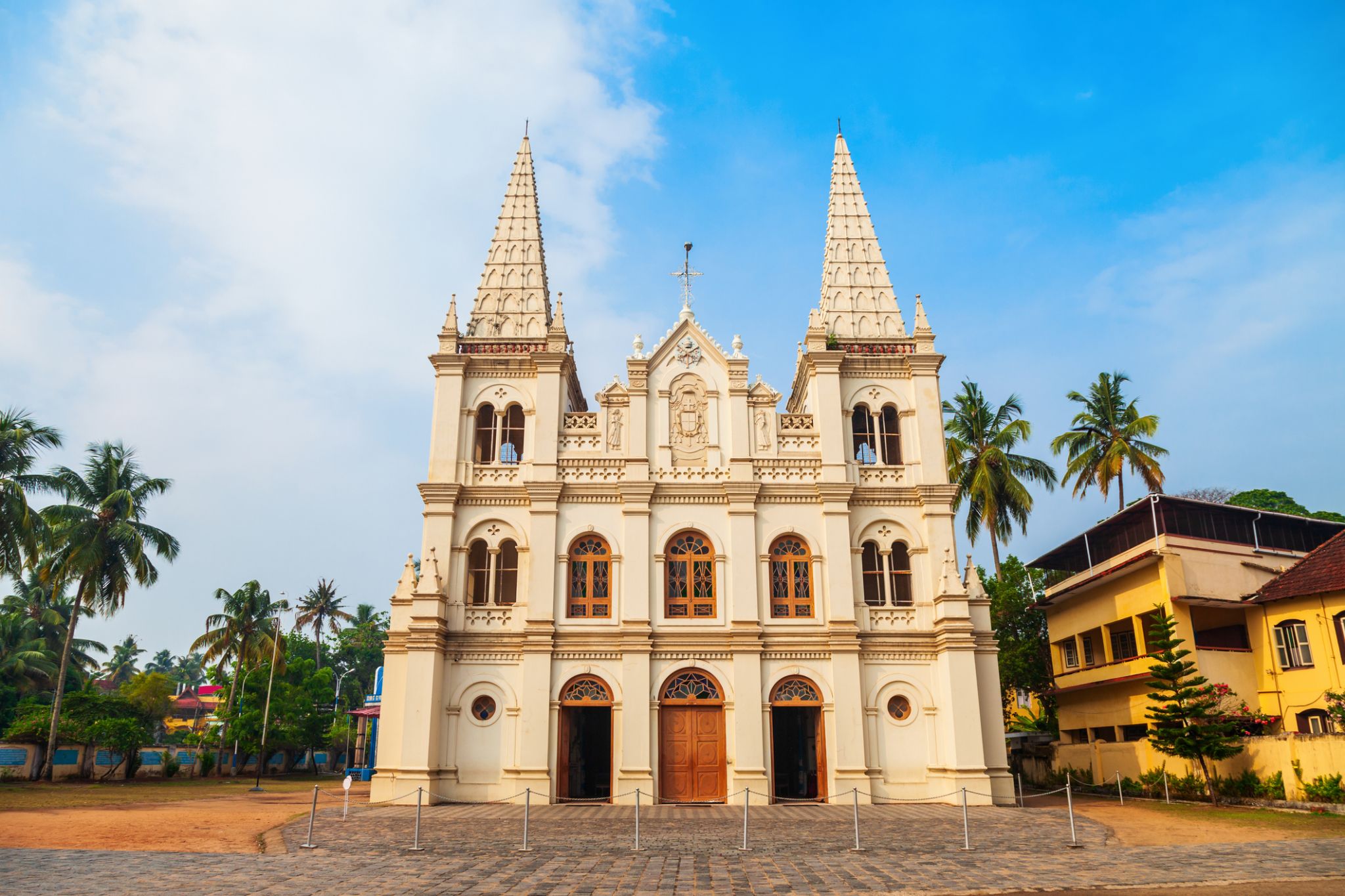
a seaport and naval base on the Malabar Coast of southwestern India, in the state of Kerala; population 254,500 (est. 2009).
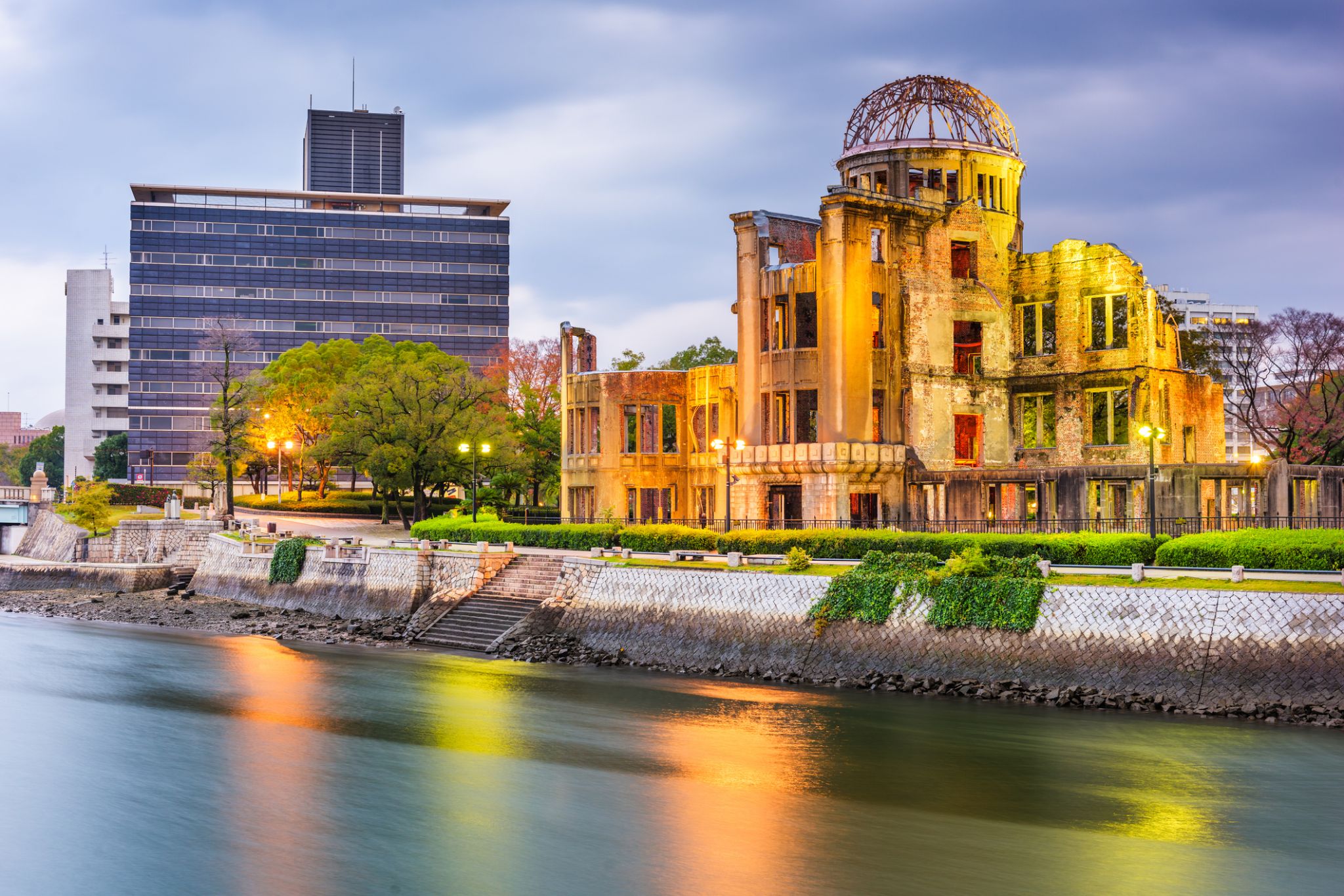
a city in southwestern Japan, on the southern coast of the island of Honshu; population 1,144,572 (2007). It was the target of the first atom bomb, which was dropped by the US on August 6, 1945, and resulted in the deaths of about one third of the city's population of 300,000. This, with a second attack on Nagasaki three days later, led to Japan's surrender and to the end of World War II.
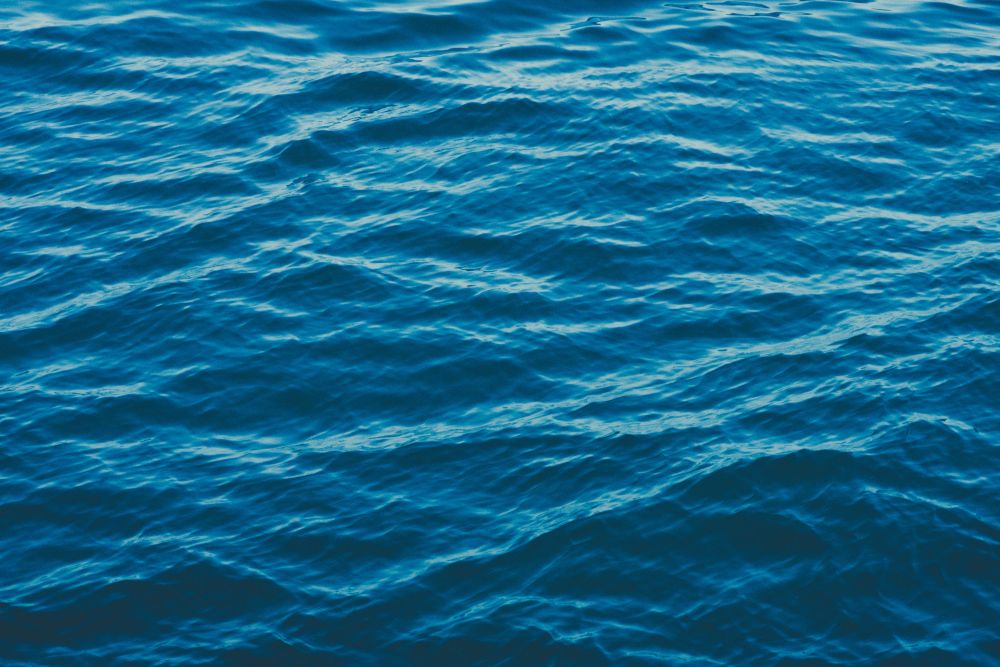
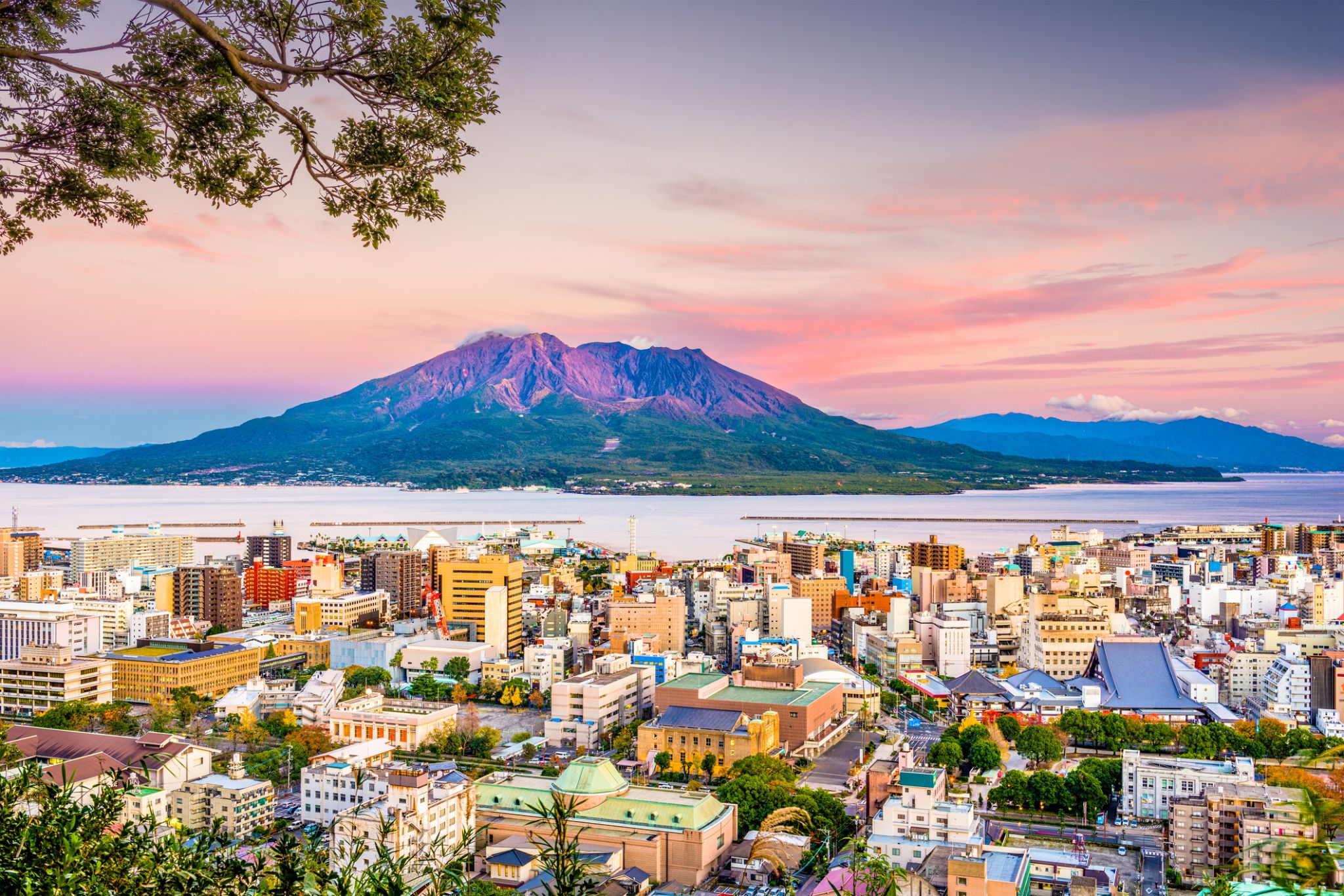
Kagoshima is the capital city of Kagoshima Prefecture at the south western tip of the island of Kyushu in Japan, and the largest city in the prefecture by some margin. It has been nicknamed the "Naples of the Eastern world" for its bay location (Aira Caldera), hot climate, and emblematic stratovolcano, Sakurajima. The city was officially founded on April 1, 1889.
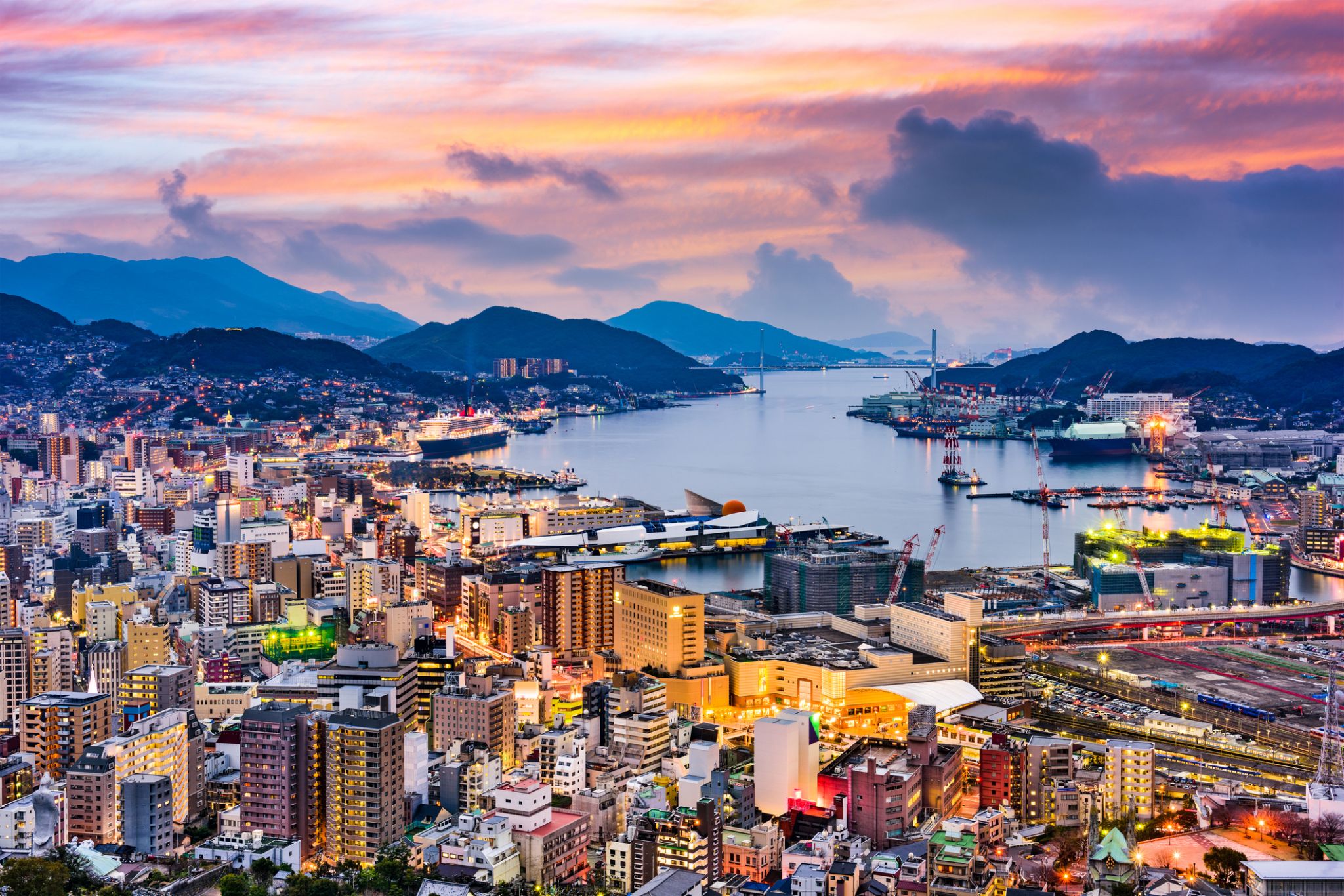
Nagasaki is the capital and the largest city of Nagasaki Prefecture on the island of Kyushu in Japan. The city's name means "long cape" in Japanese. Nagasaki became a centre of colonial Portuguese and Dutch influence in the 16th through 19th centuries, and the Hidden Christian Sites in the Nagasaki Region have been recognized and included in the UNESCO World Heritage List. Part of Nagasaki was home to a major Imperial Japanese Navy base during the First Sino-Japanese War and Russo-Japanese War.
During World War II, the American atomic bombings of Hiroshima and Nagasaki made Nagasaki the second and, to date, last city in the world to experience a nuclear attack (at 11:02 a.m., August 9, 1945 'Japan Standard Time (UTC+9)').
As of 1 March 2017, the city has an estimated population of 425,723 and a population density of 1,000 people per km2. The total area is 406.35 km2 (156.89 sq mi).
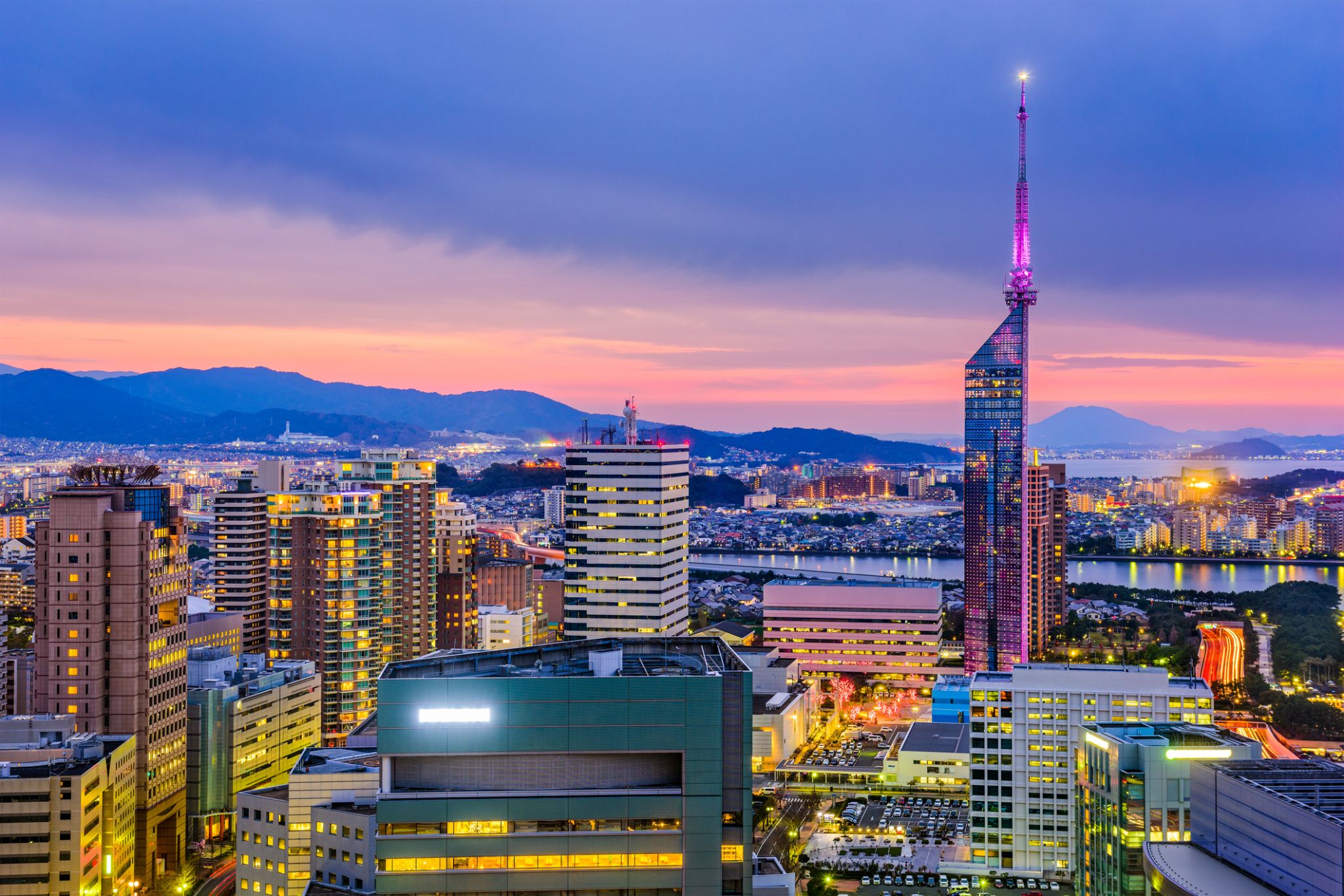
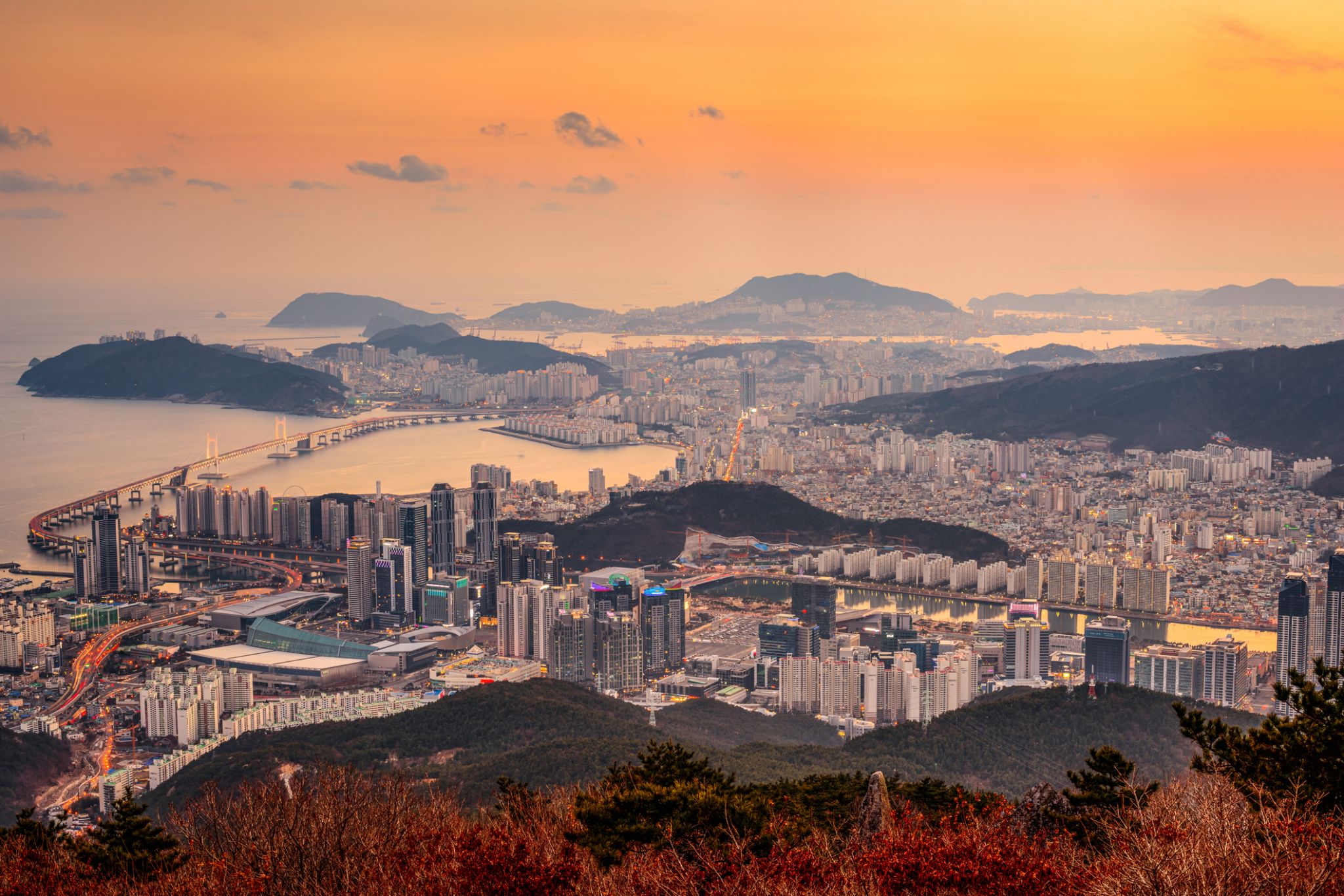
Busan, formerly known as Pusan and now officially Busan Metropolitan City, is South Korea's second most-populous city after Seoul, with a population of over 3.5 million inhabitants. It is the economic, cultural and educational center of southeastern Korea, with its port—Korea's busiest and the 9th-busiest in the world—only about 120 miles (190 km) from the Japanese islands of Kyushu and Honshu. The surrounding "Southeast Economic Zone" (including Ulsan and South Gyeongsang) is now South Korea's largest industrial area.


Seoul, officially the Seoul Special City, is the capital and largest metropolis of South Korea. With surrounding Incheon metropolis and Gyeonggi province, Seoul forms the heart of the Seoul Capital Area, home to roughly half of the country's population. Seoul is ranked as the fourth largest metropolitan economy in the world and is larger than London and Paris.
Strategically situated on the Han River, Seoul's history stretches back over two thousand years, when it was founded in 18 BCE by the people of Baekje, one of the Three Kingdoms of Korea. The city was later designated the capital of Korea under the Joseon dynasty. Seoul is surrounded by a mountainous and hilly landscape, with Bukhan Mountainlocated on the northern edge of the city. As with its long history, the Seoul Capital Area contains five UNESCO World Heritage Sites: Changdeok Palace, Hwaseong Fortress, Jongmyo Shrine, Namhansanseong and the Royal Tombs of the Joseon Dynasty. More recently, Seoul has been a major site of modern architectural construction – major modern landmarks include the N Seoul Tower, the 63 Building, the Lotte World Tower, the Dongdaemun Design Plaza, Lotte World, Trade Tower, COEX, and the Parc1 Tower. Seoul was named the 2010 World Design Capital. As the birthplace of K-pop and the Korean Wave, Seoul received over 10 million international visitors in 2014, making it the world's 9th most visited city and 4th largest earner in tourism.
Today, Seoul is considered a leading and rising global city, resulting from the South Korean economic boom - commonly referred to as the Miracle on the Han River - which transformed it into the world's 7th largest metropolitan economy with a GDP of US$635.4 billion in 2014 after Tokyo, New York City and Los Angeles. International visitors generally reach Seoul via AREX from the Incheon International Airport, notable for having been rated the best airport for nine consecutive years (2005–2013) by the Airports Council International. In 2015, it was rated Asia's most livable city with the second highest quality of life globally by Arcadis, with the GDP per capita (PPP) in Seoul being $39,786. Inhabitants of Seoul are faced with a high cost of living, for which the city was ranked 6th globally in 2017. Seoul is also an extremely expensive real estate market, ranked 5th in the world for the price of apartments in the downtown center. With major technology hubs centered in Gangnam and Digital Media City, the Seoul Capital Area is home to the headquarters of 15 Fortune Global 500 companies, including Samsung, LG, and Hyundai. Ranked sixth in the Global Power City Index and Global Financial Centres Index, the metropolis exerts a major influence in global affairs as one of the five leading hosts of global conferences. Seoul has hosted the 1986 Asian Games, 1988 Summer Olympics, 2002 FIFA World Cup, and more recently the 2010 G-20 Seoul summit.